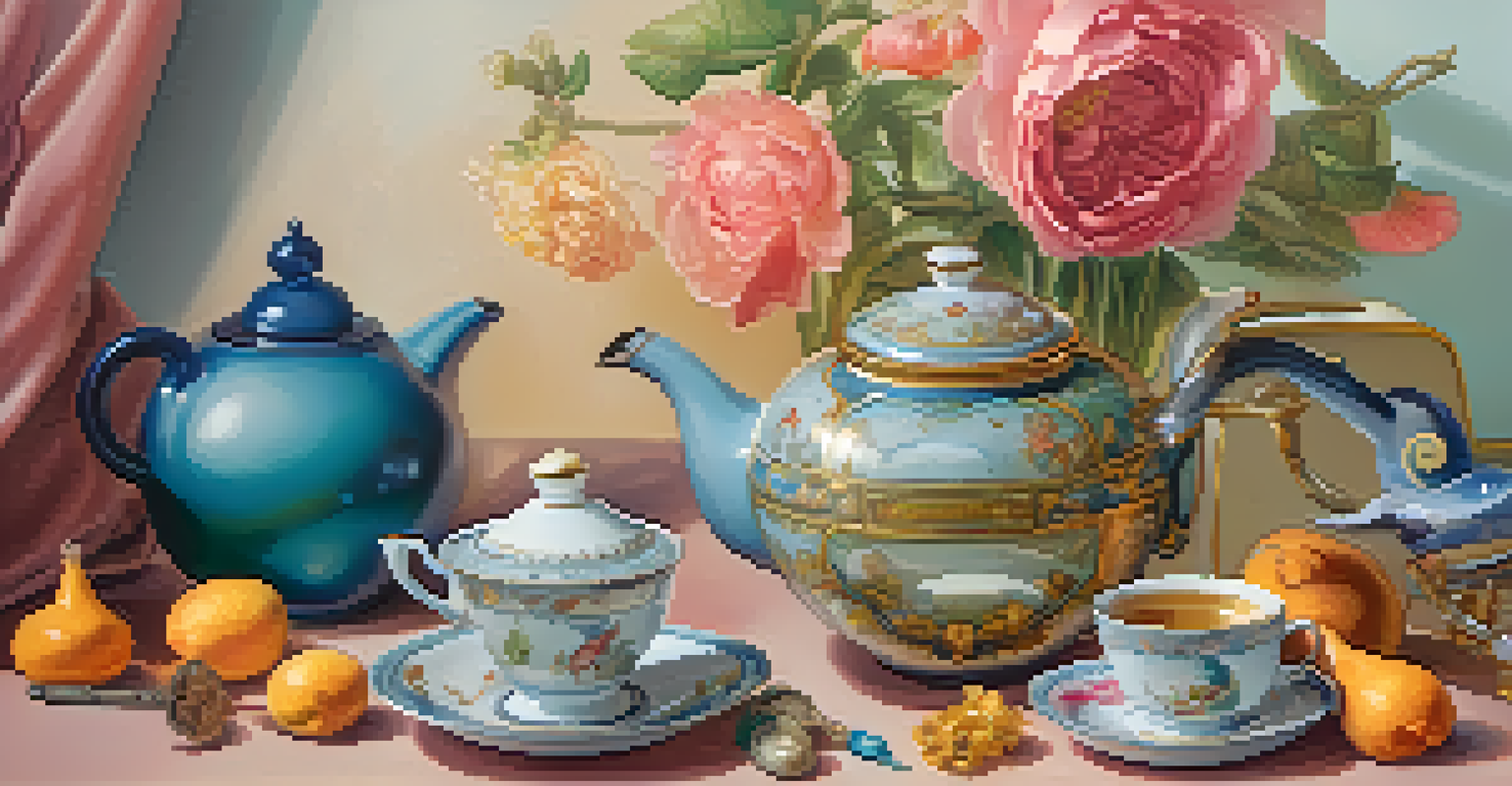Key Characteristics of Spanish Surrealism: An Artistic Journey

The Roots of Spanish Surrealism in the 20th Century
Spanish Surrealism emerged in the early 20th century, fueled by the tumultuous socio-political landscape of Spain. Artists sought to break free from traditional norms and explore the unconscious mind, inspired by the works of Sigmund Freud and André Breton. This period was marked by a desire for personal and collective expression, often reflecting the chaos surrounding the Spanish Civil War.
The only difference between a madman and me is that I am not mad.
As artists delved into their subconscious, they began experimenting with dreams and irrationality, creating a unique blend of fantasy and reality. The impact of earlier movements like Dadaism can also be felt here, as artists challenged conventions and embraced absurdity. This foundation set the stage for the distinct characteristics that would define Spanish Surrealism.
Overall, the roots of Spanish Surrealism are deeply intertwined with the cultural and historical context of the time, making it a fascinating study of art that resonates with the emotional turmoil of its creators.
Emphasis on Dreams and the Unconscious Mind
One of the most significant characteristics of Spanish Surrealism is its focus on dreams and the unconscious mind. Artists believed that dreams could provide insight into the hidden desires and fears of individuals, offering a glimpse into their psyche. This exploration often led to imaginative and bizarre imagery that defied logic and reason.

For example, Salvador Dalí's iconic melting clocks in 'The Persistence of Memory' exemplify how dreamlike elements can distort our perception of reality. By tapping into the subconscious, artists like Dalí and Joan Miró created works that were not only visually striking but also psychologically profound. These dreamscapes invite viewers to question their own understanding of reality.
Dreams Shape Spanish Surrealism
The emphasis on dreams and the unconscious mind allowed artists to explore hidden desires and create visually striking, psychologically profound works.
In essence, this emphasis on the unconscious allows Spanish Surrealism to transcend mere visual art, transforming it into a journey through the human mind and its complexities.
Bizarre and Juxtaposed Imagery in Artwork
Spanish Surrealism is renowned for its bizarre and often shocking imagery, which serves to challenge viewers' perceptions of reality. Artists frequently employed techniques like juxtaposition, where unrelated elements are placed together to create a sense of surprise or confusion. This approach invites viewers to interpret the artwork in their own unique ways.
Surrealism is based on the belief in the superior reality of certain forms of previously neglected associations, in the omnipotence of dream, in the disinterested play of thought.
For instance, Ramón Gómez de la Serna's works often combined everyday objects with surreal elements, creating a dreamlike atmosphere. This playful yet unsettling combination encourages audiences to reconsider their understanding of the mundane. The use of unexpected imagery not only captivates the viewer but also provokes thought and emotion.
Ultimately, these bizarre and juxtaposed images are essential to the Spanish Surrealist movement, as they reflect the inner workings of the mind and challenge conventional ways of seeing the world.
Symbolism and Personal Interpretation in Art
Symbolism plays a crucial role in Spanish Surrealism, as artists often infused their works with personal meanings and interpretations. Symbols can be drawn from cultural, historical, or personal contexts, allowing each artist to convey their unique perspectives. This layer of symbolism invites viewers to engage with the artwork on a deeper level.
For instance, the use of common symbols such as keys, doors, and mirrors can represent various themes like discovery, transformation, or identity. These symbols often resonate differently with each viewer, making the experience of engaging with the artwork deeply personal. The ability to interpret symbols in diverse ways reflects the complexity of human experience.
Politics Influenced Artistic Expression
The socio-political turmoil of Spain, particularly during the Civil War, inspired artists to critique society and express dissent through powerful imagery.
By incorporating symbolism, Spanish Surrealism not only communicates individual stories but also taps into universal themes, creating a bridge between the artist and the audience.
Influence of Politics and Society on Surrealism
The socio-political climate of Spain during the early 20th century significantly influenced the development of Spanish Surrealism. Artists responded to the turmoil of the Spanish Civil War and the rise of authoritarian regimes by incorporating political themes into their work. This engagement with current events allowed them to critique society and express their dissent through art.
For example, works by artists like Pablo Picasso reflected the horrors of war and the impact of political strife on human lives. His painting 'Guernica' serves as a powerful anti-war statement, encapsulating the chaos and suffering experienced during this tumultuous time. This intertwining of art and politics underscores the role of the artist as a social commentator.
In summary, the influence of politics and society on Spanish Surrealism highlights the movement's relevance to the human experience, making it a poignant reflection of its time.
The Role of Women in Spanish Surrealism
Women played a vital yet often overlooked role in the Spanish Surrealist movement, contributing to its richness and diversity. Figures like Remedios Varo and Leonora Carrington brought fresh perspectives and unique styles that challenged the male-dominated art scene. Their work often explored themes of feminism, identity, and the supernatural.
For instance, Varo's paintings frequently depict women in mystical settings, highlighting their strength and autonomy. These representations challenge traditional gender roles and present alternative narratives that empower women. The contributions of female artists not only enriched the movement but also paved the way for future generations.
Women Enriched Surrealist Movement
Female artists like Remedios Varo and Leonora Carrington brought unique perspectives that challenged traditional narratives and empowered women's representation in art.
Ultimately, recognizing the role of women in Spanish Surrealism is essential for a comprehensive understanding of the movement as a whole, as their voices added depth and complexity to this artistic journey.
Legacy and Impact of Spanish Surrealism Today
The legacy of Spanish Surrealism continues to influence contemporary art and culture, resonating with artists and audiences alike. Its emphasis on dreams, the unconscious, and the absurd still inspires modern creators to explore the depths of human experience. This enduring impact highlights the movement's relevance beyond its historical context.
Today, many contemporary artists draw from Surrealist principles, experimenting with dreamlike imagery and symbolic representation in their work. The fascination with the subconscious remains a powerful tool for self-expression and exploration. As new generations engage with these themes, Spanish Surrealism's influence is evident across various artistic mediums.

In conclusion, the impact of Spanish Surrealism extends far beyond its time, continuing to inspire and provoke thought in the art world and beyond, ensuring its place in the ongoing dialogue of creativity.